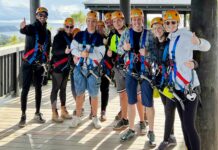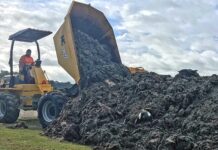The credibility of efforts to police commercial fishing activity in the Hauraki Gulf has taken another blow after Greenpeace released a leaked Ministry of Primary Industries report.
The gulf is the most productive part of the country’s main snapper fishery, SNA1, which covers the east coast of the northern North Island as far south as East Cape.
On board cameras are being progressively introduced to the snapper fleet to allay environmental concerns over illegal practices such as fish dumping, and high-grading (where fish of legal size are returned to the sea so fishers can land larger fish which fetch higher prices).
By law, snapper more than 25 cm in length must be landed by commercial fishers and anything under 25cm returned to the sea.
The introduction of the cameras has also prompted MPI to cut the number of observers it employs to undertake on-board monitoring.
But an internal report to MPI argues that the CCTV camera footage does not provide sufficient evidence of snapper size to support prosecutions. The 2016 report followed a trial of the cameras and explains – at length – the difficulties in using video stills to forensically measure fish piled into bins.
Greenpeace executive director Russel Norman says the report shows the cameras are “not fit for purpose”.
Primary industries minister Nathan Guy had claimed video monitoring would solve illegal dumping, Mr Norman says.
“Yet all this time MPI have been sitting on a report by their own scientists which makes it clear that the video evidence isn’t good enough for a successful prosecution.”
The leak is just the latest in a series of own goals in MPI’s efforts to rebuild public confidence in its oversight of commercial fishing. Last November, it admitted that up to 80 percent of cameras installed on snapper trawlers had failed in their first three months of use.
In April, it was revealed that the company chosen to place and monitor the on-board cameras, Trident Systems, was wholly owned by the fishing industry.
Trident Systems’ chairman Jeremy Fleming told Radio New Zealand the on-board cameras used in the trial were not set up to provide evidence for prosecutions. They were intended to verify fishers’ reporting of under-size snapper for fisheries management purposes, not for compliance, he said. The cameras would have to be set up “quite differently” to measure individual fish length.
MPI’s acting director of fisheries Steve Halley later was adamant that the cameras would be used to support prosecutions. He slammed the 2016 internal report as a poor quality draft that was “incredibly misleading”.
Recreational fishing group LegaSea says the latest gaffe is evidence of a systemic problem. It is calling for a commission of inquiry, given the “problems that are affecting the ministry’s ability to act in an impartial manner”.
“It is clear that the ministry is incapable of providing the oversight this industry needs,” LegaSea spokesman Scott Macindoe says. • Geoff Cumming







